Calibration is a mandatory process for measuring instruments. In simple terms, the definition of calibration indicates that it is the process of comparing the value of an instrument to a reference value.
This process is essential in research laboratories and other facilities that use measuring and testing instruments. Understanding its importance will make your laboratory more accurate and efficient.
Using metrology is not an option, but rather a requirement, and it is also necessary to implement it as part of a periodic review within your facility. To help you learn more, this article discusses the importance of proper calibration.
Why calibrate?
Its purpose is to ensure that measurements produced by instruments are accurate, and to compare the results of different measurement methods to ensure consistency.
A calibration device has a known or reference value, which is compared to the values of the instrument being calibrated. Based on the results, the end user applies correction values to the instrument to improve the precision and accuracy of the calibrated equipment.
These values usually do not deviate and remain within the uncertainty that was provided during calibration, making them a crucial part of the measurement. If you are using a calibrated instrument, it is critical that you choose the right calibration device for the job.
Suggested reading: Discover the importance of metrology in our daily lives
How is this possible?
Ideally, the measurement should be performed twice: once before calibration and once after, in order to determine a suitable reliable standard. In order to have a greater guarantee in the process, it should be carried out periodically, in order to establish a standardized interval.
In addition, it should be carried out in an environment similar to that in which the instrument will be used.
What about failures and mistakes?
Calibration is a process that requires more than just mechanical work. While it is true that the proper execution of the measurement requires a measuring instrument and an established frame of reference, it should not be forgotten that certain phenomena can alter the quality of the results.
Calibration errors are always possible. No matter how accurate the science is, we must always take these drawbacks into account.
The errors that can arise from this process are: random errors, systematic errors, and a third category called careless errors. The latter involves not only the instrument or equipment, but also errors that may depend strictly on human or environmental issues.
In general, the values obtained do not deviate and remain within the uncertainty that was provided during the measurement. Therefore, the calibration process is a crucial part of the measurement. If you are using a calibrated instrument, it is essential that you choose the right calibration device for the job.
Suggested reading: What is the difference between error and uncertainty?
Difference between calibration and adjustment
Calibration or adjustment? These two terms can be confusing, but they are not synonymous. We have already discussed the first process.
Adjustment, on the other hand, is the adjustment that is made to the instruments to minimize errors in this part of the process. The calibrator thus ensures that the measured values remain within the accepted margins, that their deviation is minimized, based on the reference values and that they comply with the regulations.
Calibration laboratory in Quebec
The purpose of calibration is to ensure that a measurement is accurate and reproducible. Measurement is performed by a qualified professional, requires a high degree of expertise and a reliable calibration laboratory.
At SEP Metrology, we have highly qualified professionals to perform all the calibration processes you need. We have all the corresponding certifications.
Contact us at 450 776-328 or 450 776-2194 or info@sepmetrologie.com. We are SEP Metrology, experts in measurement and metrology.
